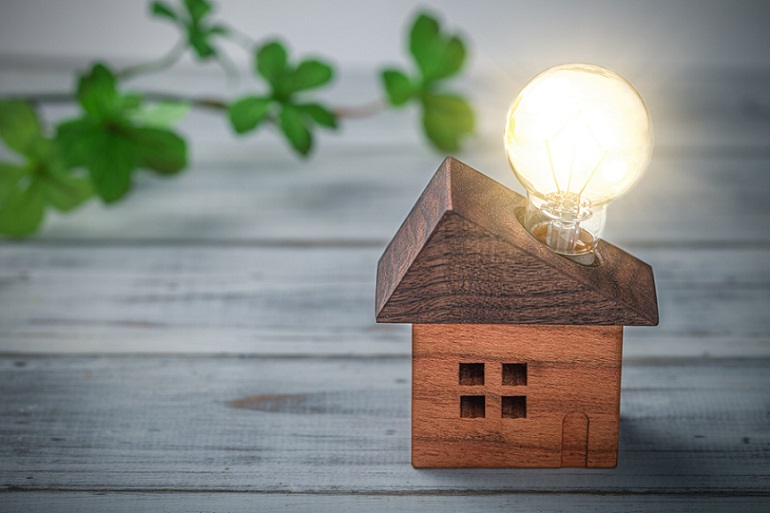MEET MARIA
The winter months are here, and it’s time to start thinking about how you can save on your energy bills. If you live in a cold climate then this will be an even more pressing concern as the weather gets colder. Here are some simple steps that anyone can take to reduce their heating costs this season.
Upgrade your Boiler for better Efficiency and Lower Energy Bills
Water and heating share in family energy consumption accounts for up to 60% of energy bills, so it makes a lot of financial sense to ensure your boiler is at its peak performance.
Even if upfront costs for the installation of an A-rated boiler appliance seem high, it pays off down the road. Compared to the conventional models, the operating costs of the new energy-efficient boilers are 9-25% lower. With a new boiler appliance, you will not only rely on functional, healthy, and economic features, but you also avoid entailing a lot of disadvantages. In contrast, old boilers cost more in terms of energy bills and pose the risk of carbon monoxide poisoning in case of a faulty appliance.
You may wonder between the tons of boiler options on the market. When you are in a dilemma: regular vs. combi boiler, mind that the regular boiler heats your home all the time add up constantly to your utility bills, while the combi boiler stands out with the production of hot water exactly when you need it.
Also, to make your boiler run on less energy and spend fewer costs for utility bills, focus on the right positioning, professional installation, and insulation.
 Replace your Old Hot Water Cylinders
Replace your Old Hot Water Cylinders
To heat water faster and save on utility bills, consider replacing your traditional, old, or leaky cylinders with new mains pressure hot water cylinders. They heat the water efficiently, economically, and eco-friendly, so you can enjoy a better shower experience and high water pressure through multiple baths and taps with consistent water temperature. Plus, they save you a lot of space as you don’t need to position a tank in the loft.
Consider them a long-term home energy investment because of the lower energy consumption, durability, low maintenance, and preventing the frozen pipes issues during the cold months.
You can achieve extra savings when you insulate cylinders with an additional layer of material so that the water will stay longer hot in the cylinder.
Don’t assume adjusting the thermostat to a higher setting will make the water heat faster. It merely means that you have to add more cold water to the hot one. Finally, you waste more energy to reach an unnecessarily high temperature. To avoid the risk of overheating and achieve better energy-saving results, it’s best to set the thermostat of the hot water cylinder to 60-65°C.
Save on energy bills when adjusting the thermostat the right way
Banish the cold weather and high electricity bills when you install the thermostat in the room you use the most.
The general rule of thumb is that the thermostat senses the air temperature in the immediate vicinity only. So, one of the best saving tactics is to mount the thermostat away from any sources of heat, direct sunlight, and not to block it with bulky furniture or a radiator cover. Curtains over it can also lead to inaccurate readings.
Adjust Thermostatic radiator valves (TRVs) to keep your home temperature comfortable at lower prices
Many homeowners are prone to turn the thermostat to the highest level to keep the warm air inside during the cold snap. Forget about this practice. To save money and achieve better temperature comfort, adjust the knob to a low level and turn it up gradually until the room reaches the desired temperature. Once you reach the ideal room temperature, let the TRVs control it on their own.
If you can afford it, install wireless, programmable thermostats that can automatically measure how warm your room is and adjust the temperature only if needed.
To Save Money, allow All radiators to Work Efficiently
Even if you may find it’s a good idea, turning off one or more radiators will not result in real savings. Turning down or off only one element of the radiator system will only result in unbalanced work, meaning that the other radiators need to work harder to distribute the heat throughout your home. So, to get the maximum benefit of your radiator work, turn on all your radiators.
Add a Storm Room for further Insulation
With rising energy/fuel prices, a good idea is to keep your home insulated. Property experts from Fantastic Services Group say that adding a storm room comes as an extra level of protection against a snowstorm, melting snow, or heavy rain. It’s also an excellent energy investment if your home is equipped with an old, but still in good condition door. Well, you’ll spend some money on purchase and installation, but it will pay off with better insulation, comfort, and a cosy atmosphere.
Focus on the Poorly Insulated Areas in your Home
Poorly insulated doors and windows are serious energy wasters. A great and cheap way to reduce your heating expenses is to heatproof your property. Apply weather stripping to block the air leaks caused by doors and windows. Plus, seal the air leaks between window frames and walls with caulking. By weatherising, you can typically see the ROI of your efforts in less than a year.
Also, remember to winter-proof your attic, basement, and crawl spaces as they are the main culprits behind heat loss.
Conclusion
The winter season is a great time to save on energy bills by taking the necessary steps to protect your home. Just make sure you go for high-quality materials that will not wear out by next Christmas and will be able to serve their purpose for many years to come.

